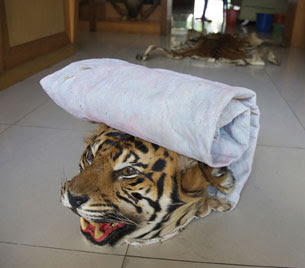I was pretty surprised to see anything written about the recent sudden change of prime ministers in Laos. Usually discussions of politics is limited to pre Lan Xan kingdoms for fear of controversy.
Here's the link with a hat tip to Lao FAB
Family Problems
I couldn't always keep all the names straight when trying to make heads or tales of the article. Eventually I began to understand the whole dustup is likely between competing corrupt factions fighting over who is going to make off with the spoils.
One part that had me thinking was the reference to pressure on the Lao Army to stop cutting and selling forests. Another interesting part was that most of the players are "southerners". When I hear the Lao Army and logging spoken in the same paragraph I think General Cheng, who must be somewhere in his 70s by now if not older.
Must be quite the scramble to see who can sell Laos to the Chinese the quickest. You can only sell a country once, and once it's sold there will be no more to resell.
Here's the link with a hat tip to Lao FAB
Family Problems
Former PM Bouasone Bouphavanh
One part that had me thinking was the reference to pressure on the Lao Army to stop cutting and selling forests. Another interesting part was that most of the players are "southerners". When I hear the Lao Army and logging spoken in the same paragraph I think General Cheng, who must be somewhere in his 70s by now if not older.
Must be quite the scramble to see who can sell Laos to the Chinese the quickest. You can only sell a country once, and once it's sold there will be no more to resell.























